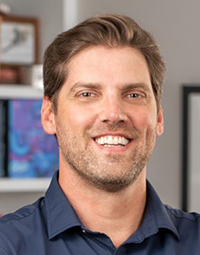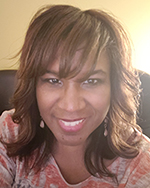988 Campaign Makes a Difference

The numbers 988 have been designated as the new three-digit dialing code that will route callers to the National Suicide Prevention Lifeline (now known as the 988 Suicide & Crisis Lifeline). The code is active across the United States.
WECT Television News in Wilmington, N.C., hosted a segment about the installation of new 988 suicide prevention and crisis lifeline signs posted around Wrightsville Beach, N.C. When people call, text, or chat 988, they will be connected to trained counselors who are part of the existing Lifeline network. These counselors will listen, understand how the problems are affecting the person, provide support, and connect them to resources if necessary.

Treasurer and compliance officer for the NASW national board of directors, S. Ryan Estes, MSW, MBA, LCSW, LCAS, CCS, was interviewed for the segment.
“It’s a moment to really tackle stigma and to take time to be more intentional with outreach to the community to draw awareness,” said Estes, chief operations officer at Coastal Horizons Center Inc., a leading provider of mental health and substance use services in eastern North Carolina. “It’s an opportunity to really have those that have not historically been involved in efforts to start to rally behind it.”
Estes said he knows the 988 signs make a difference. “We know people are accessing it. We know it’s a great strategy, and we’re thankful it’s in our community and across the country. We just have so much work to do to turn the tide on this epidemic.”
Kalimah Johnson: NASW-Michigan

Domestic violence disproportionately affects the Black community. Forty-five percent of Black women and 40% of Black men have experienced intimate partner physical violence, intimate partner sexual violence or intimate partner stalking in their lifetimes, compared with 25% of women and 11% of men across all races, says the National Domestic Violence Hotline.
NASW Michigan member Kalimah Johnson, a clinical social worker, founded the SASHA Center (Sexual Assault Services for Holistic Healing and Awareness) in Detroit 13 years ago to provide support group services for members of the African American community who have experienced sexual assault, says a Detroit News article. “A lot of times, sexual assault goes hand in hand with domestic violence,” Johnson said. “We try to gather and get Black women together to lower the isolation of being sexually assaulted or domestically abused.”
Among the services provided are therapists, educational workshops and “conversations between and with Black men,” she said.
Steve Carleton: NASW-Colorado

Fewer couples are marrying, compared with previous generations. In 2021, the national median age of first marriage was 29.2 years old, representing a 32% increase in age since 1973, according to the U.S. Census Bureau. People who marry young are still getting to know themselves, says a story posted at Best Life. “Marrying at a young age may mean the individuals have not fully matured or discovered their identity, leading to changes that cause incompatibility over time,” says NASW-Colorado member Steve Carleton, LCSW, CACIII, a clinical social worker and the executive clinical director at Gallus Detox. Also, 40% of first marriages end in divorce within 15 years—and that rate only rises for subsequent marriages. While disagreements are normal and healthy in a marriage, an atmosphere of constant arguing and antagonism is sure to damage the fibers of a union. “Too much conflict can wear down even the most resilient individuals, infusing the relationship with negativity,” Carleton says.
Sarita E. Trawick: NASW-Oregon

The misconception that people with ADHD lack the ability to pay attention is not true, says Sarita E. Trawick, LCSW. “The people that have ADHD often can actually hyper-focus on something that they’re interested in,” said Trawick, who sees clients in Kentucky and Oregon. Pairing an activity or area of interest with the boring or difficult task can help, she said.
The NASW-Oregon member was quoted in The Sentinel-News about breaking the stigma. Calling ADHD “dopamine deficit” may be more accurate, she said. That’s because “boredom is like death to someone who has ADHD.”
Sandra McGatha: NASW-Missouri

Visual art, or art that can be seen, especially on walls to add color and design to a space, can be important for individuals who have dementia, says Sandra McGatha, LCSW, a member of NASW-Missouri. Individuals with dementia may not be able to verbally express feelings about their dementia, but emotionally they may retain the ability to share their inner world through their art, she states in a guest column she wrote, posted on Cleveland.com. “In addition to the type of art activity, the color palette can make a difference, too,” McGatha writes. “Research increasingly shows that color, whether in art for viewing or art created by individuals with dementia, can assist in changing moods, evoking memories and even increasing appetite.”
Drawing or painting, along with the textures and colors of the chosen medium, engages visual and tactile senses in the exercise of creation, she notes in the column. Creating art prompts visual stimulation, problem-solving, spatial awareness and design that can be beneficial to individuals with dementia.
Lamar Hill: NASW-North Dakota

Lamar Hill navigated the complexities of his Native American and African American heritage while being raised in a predominantly white community. These experiences laid the foundation for his work as a social worker, and his passion to help others facing adversity and discrimination, says a story posted at the Sahan Journal. The NASW-North Dakota member runs Four Elements Therapy, where he serves North Dakota and Minnesota residents. “I bring a unique perspective as being a person of color, but also my experiences growing up,” he says. “I can definitely relate.”